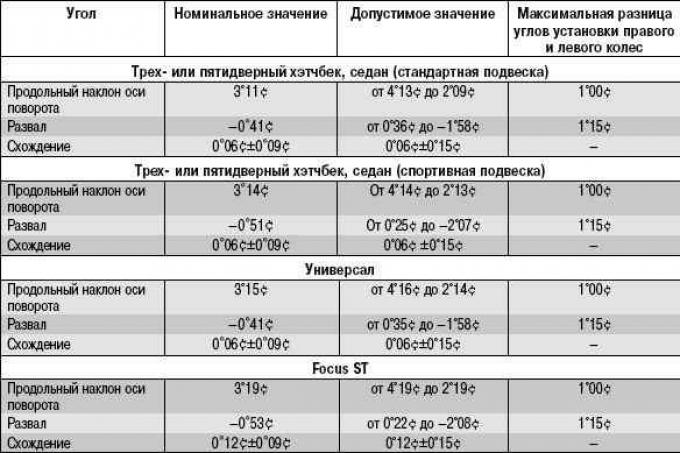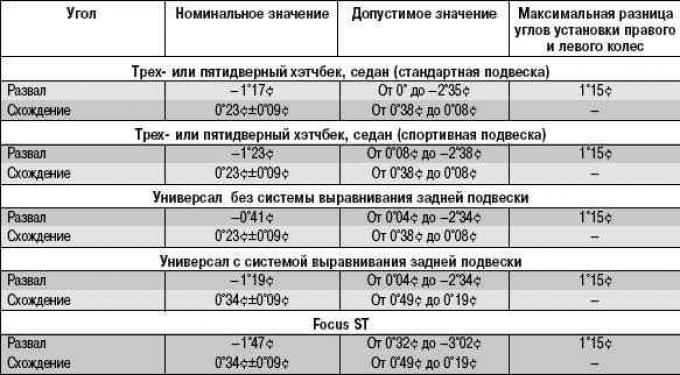The discrepancy between the actual values measured on the vehicle and the reference values indicated below is due to wear and deformation of the suspension parts or deformation of the body.
WARNING: Replacing or repairing suspension parts can change wheel alignment, so checking wheel alignment is a must.
Front wheel alignment with a dead weight of the car are given in table. 4.3, the angles of installation of the rear wheels with the car's own weight - in Table. 4.4.
After installing the car on the stand (just before checking corners) «press» car suspension, applying two or three times a force of 392–490 N (40–50 kgf), directed from top to bottom, first to the rear bumper, and then to the front. The wheels of the vehicle must be parallel to the longitudinal axis of the vehicle.
When checking and adjusting the front wheel alignment, first check the caster angle, then the camber angle, and lastly the toe-in.
Table 4.3 Front wheel alignment

Table 4.4 Rear wheel alignment angles

Caster angle of the front wheel steering axis formed by a vertical line and a line passing through the middle of the upper support of the telescopic strut and the center of the ball bearing sphere fixed on the lower arm. Adjusting the angle of the longitudinal inclination of the axis of rotation is not provided for by the design of the car. If the angle deviates from the nominal value, replace damaged and deformed parts.
Front camber angle characterized by a deviation of the mean plane of rotation of the wheel from the vertical. Adjustment of a corner of disorder of forward wheels is not provided by a design of the car.
Front wheel alignment represents the angle between the plane of rotation of the wheel and the longitudinal axis of the vehicle. The convergence of the front wheels is regulated by changing the length of the steering rods.
Check the following rear wheel alignment.
Rear camber angle characterized by a deviation of the mean plane of rotation of the rear wheel from the vertical. Camber adjustment of the rear wheels is not provided for by the design of the car.
Rear wheel alignment represents the angle between the plane of rotation of the rear wheel and the longitudinal axis of the vehicle. The toe angle is adjusted by turning the adjusting bolts that secure the lower rear arm to the rear suspension cross member.
Visitor comments